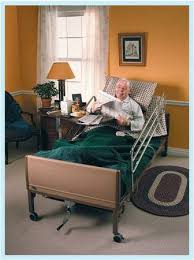The place of death

This article which ran first in the New York Times but which I found in Saturday’s Minneapolis Tribune deals with the fact that death is trending to happen more often in homes rather than in institutions for the first time in over half a century. The article states that in 2017 (the latest year statistics are available for this) for the first time in over 50 years more people (30.7%) died in a home setting than in a hospital setting (29.8%).
The article also states that the balance of those that died did so in nursing homes or a hospice setting. The article also points out that this is a dramatic shift in where Americans died and is a movement in what Americans now call “Good Death”.
A reference point is that over 100 years ago, in 1912, approximately 2/3 of Americans died at home. The trend started moving towards institutional death and in the 1950s the numbers were about even. By the 1970s, however, institutional deaths were about 2/3 of all deaths in America. Then the trend started reversing to the point we are at today with more again dying at home rather than in a hospital.
Funeral Director Daily take: If you have followed my writings very long you know that I put everything into the funeral director owner’s perspective. You also know that I really try to put a lot of credence into what are the societal and demographic trends happening in our country that will affect funeral service.
If you have operated a funeral home for a period as long as I did — 35 years from about 1980 to 2015 – you more than likely saw the realization of the fact that more people died at home. Sometime in that period our funeral home needed to go to two person death call teams from one person because when the deaths were at a home there was no assurance of elevators and institutional staff to help the single funeral director make the removal. Our costs went up because we started hiring additional on-call staffing.
My hunch is that the 30.7% that die at home will reflect a low number as we move forward. Hospice care is increasing at a 1.49% clip annually and the trend is for hospitals to be paid for episodal diagnosis and treatment rather than length of stay so it will behoove them to move terminal patients out as soon as possible.
For instance, I serve as the Chairman of the Board for a non-profit Home Care and Hospice concern. Beginning a couple of days ago on January

Tom Anderson
Funeral Director Daily
1, Medicare started reimbursing us with episodal payments. What that means, on the Home Care side is that, say a patient breaks a foot, Medicare will pay us what they believe it should cost to treat that foot from break to “back to normal”. We will no longer get paid each time we see the patient and re-do the cast, x-ray the foot, etc. . . .it is now one payment for the episode of breaking a foot.
By the way, we tracked the new payment procedure for the last half of 2019 with a computer program we purchased. The payment system change was supposed to be “revenue neutral” according to Medicare. What we found were that our revenue receipts from Medicare would have been 13% less had we been on that system for the last half of 2019. It means that in the next year we, and other health care systems, probably have to get more efficient in what we do, but a good side of that is that hopefully, Medicare will curb some of their expenditures which would be good for us all over the long run.
As I stated above, with terminal cases, my guess is that type of payment system will move hospital systems to move terminal patients out as soon as possible. Since patients can then move into the Medicare Hospice patient payment system, I believe that they will and that will cause patients to get on hospice earlier – which is a good thing — but will lead to more deaths at home.
Further more, I see a real correlation with a slow, steady movement towards home death much like the slow, steady movement towards cremation over earth burial that started in the late 1960s. I also believe high percentages of home death may alter death care as much, or more, as the cremation movement has done.
As for the death care industry, I can see the awareness of the consumer and the death at home movement potentially changing the death care industry. I see opportunities and I see threats. Sometime in a future column I will expound on those.
[wpforms id=”436″ title=”true” description=”true”]



















